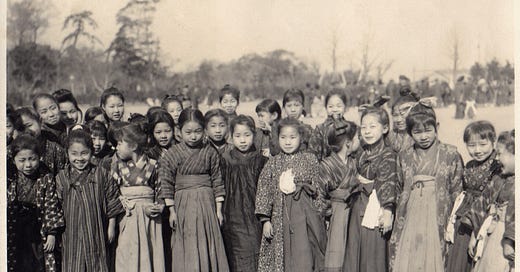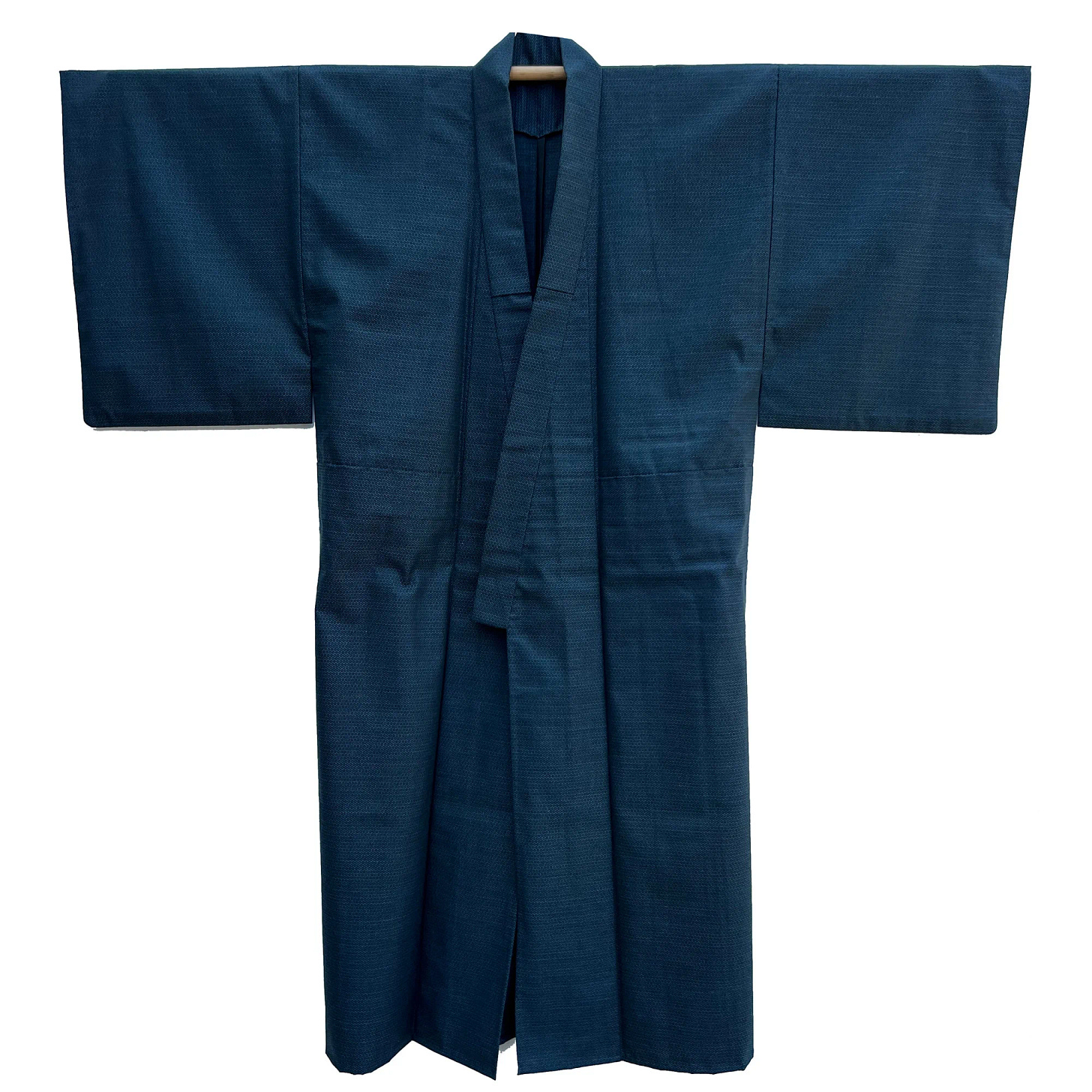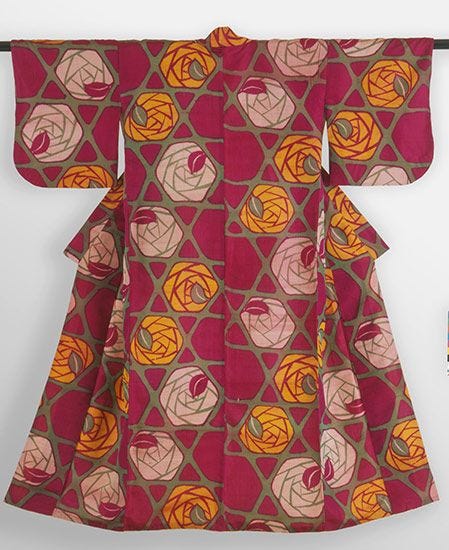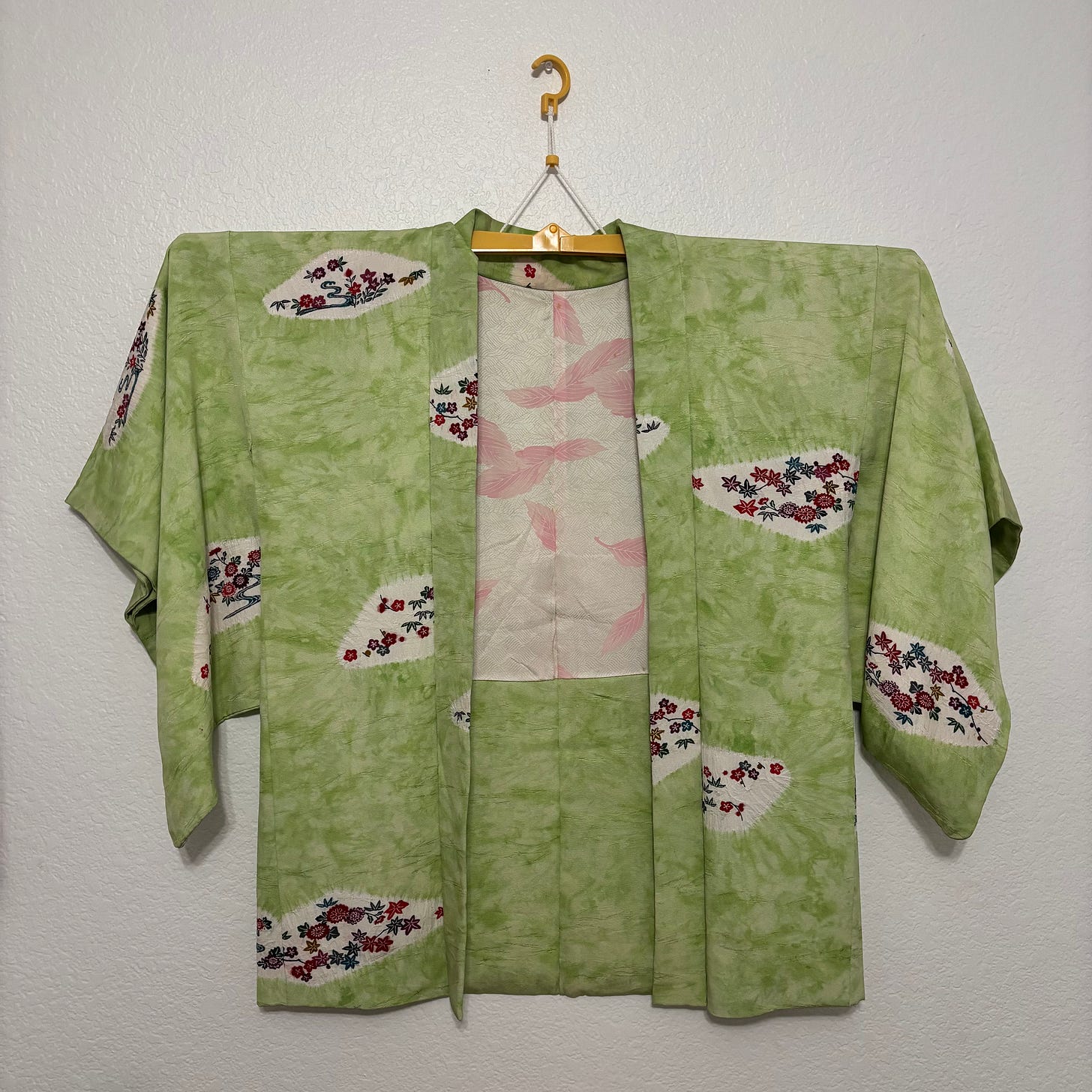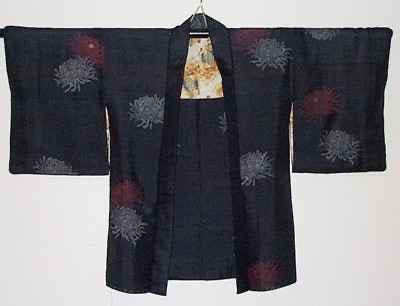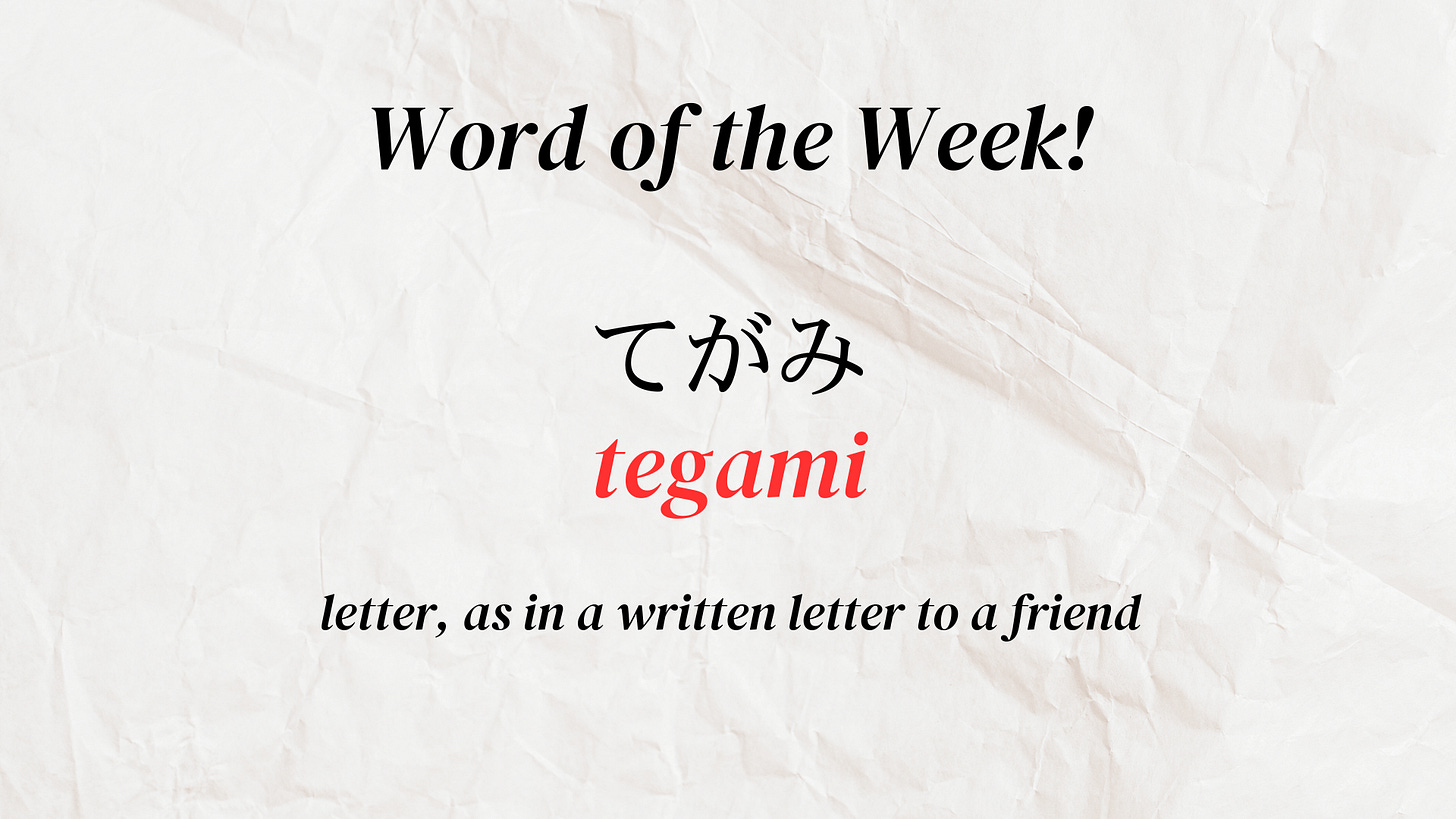Hello, friends! A pleasure to see you here! I appreciate you coming back to read after a break. If you follow my notes, you will see that I’ve been in the midst of Master’s work in linguistics and an undergrad Japanese class. While I greatly appreciate the ability and privilege I have to be in these classes, they tend to take up my time when I’m not at work. The good news is that I’ve been excelling in these two classes and can actually converse in Japanese to a basic degree now, which has been a delight to see.
In a recent conversation I had, I was reminded of a teaching principle. The teacher must take care to teach the basic foundations. Even when it’s basic to us, it’s not basic to our audience. It definitely got me thinking! I can’t assume that everyone in my audience knows everything or even the basics of Japan. In fact, if you came here to learn more about Japan, I am humbled and honored that you would want to do so here!
So I’m going to start at the basics and build up from there. When I thought about the most outstanding facets of Japanese culture, I thought of the dress and fashion. Many are familiar with the concept of the kimono. Even if you’ve never seen one, you’ll recognize it as Japanese, I’m sure. What’s even more special about Japanese dress during the Taisho period is the slow transition and adoption of more Western-inspired clothing styles. Some people would completely adopt the Western style, while others would combine the Western style with the traditional dress of the kimono and hakama.
Also, when I say “Western,” I don’t mean a haori-wearing, katana-wielding cowboy whose best line is, “This prefecture ain’t big enough for the both of us” (though that is quite the mental picture). When I mention Western clothing, I mean clothing that is predominant in Western cultures, such as Great Britain or America. We’ll see examples of these styles here in a moment.
Let’s start first with the traditional dress to get on the same page. Then, we’ll look at the Western style and see a lovely mixture of the two.
Traditional Japanese Dress
Traditional Japanese dress consisted of kimono in the springtime, fall, and winter. They were made of silk and had many styles that were worn for different occasions and changed depending on whether the wearer was married or not. In the summer, you would find people wearing the thinner material of a yukata. These are often made of cotton, as the climate in the summertime tends to be hot and humid. The thick layers of the silk would leave the wearer hot and stuffy, so the light cotton was breathable during the hot months.
There are many little facets of the kimono dress, such as the obi belt, the obimakura, and the obijime, but I’ll just leave you with a little infographic this time so we don’t get bogged down in the details.
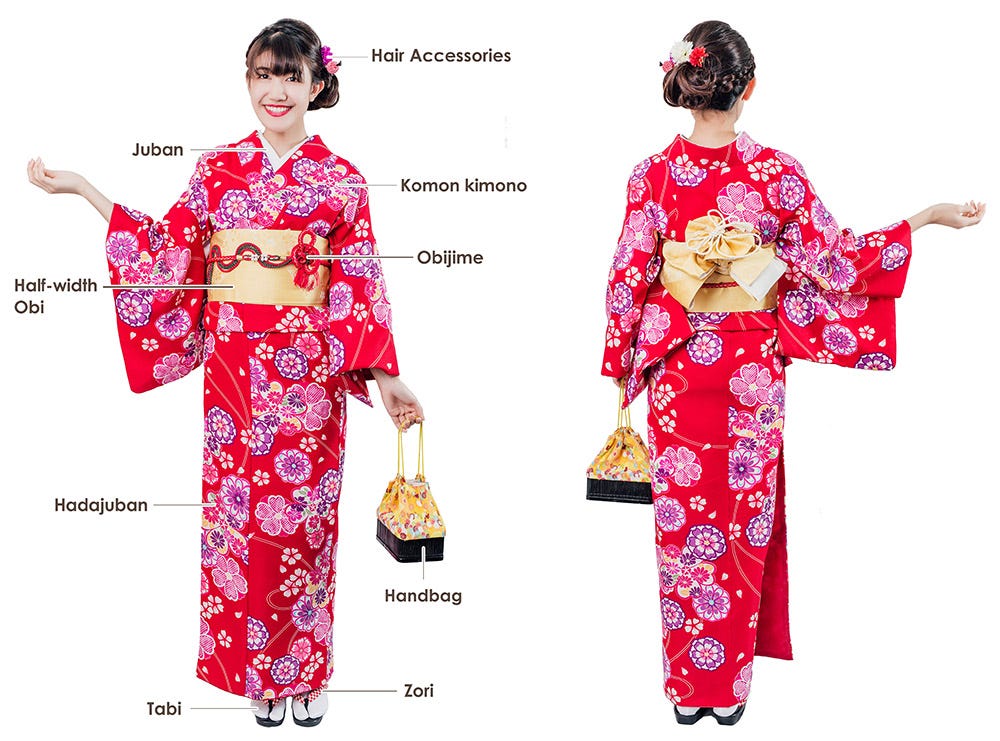
A new style of kimono was introduced during this era: the homongi. This homongi was known more as a sort of visiting dress and was worn when family members or friends visited each other. These homongi were also to be worn when attending weddings.
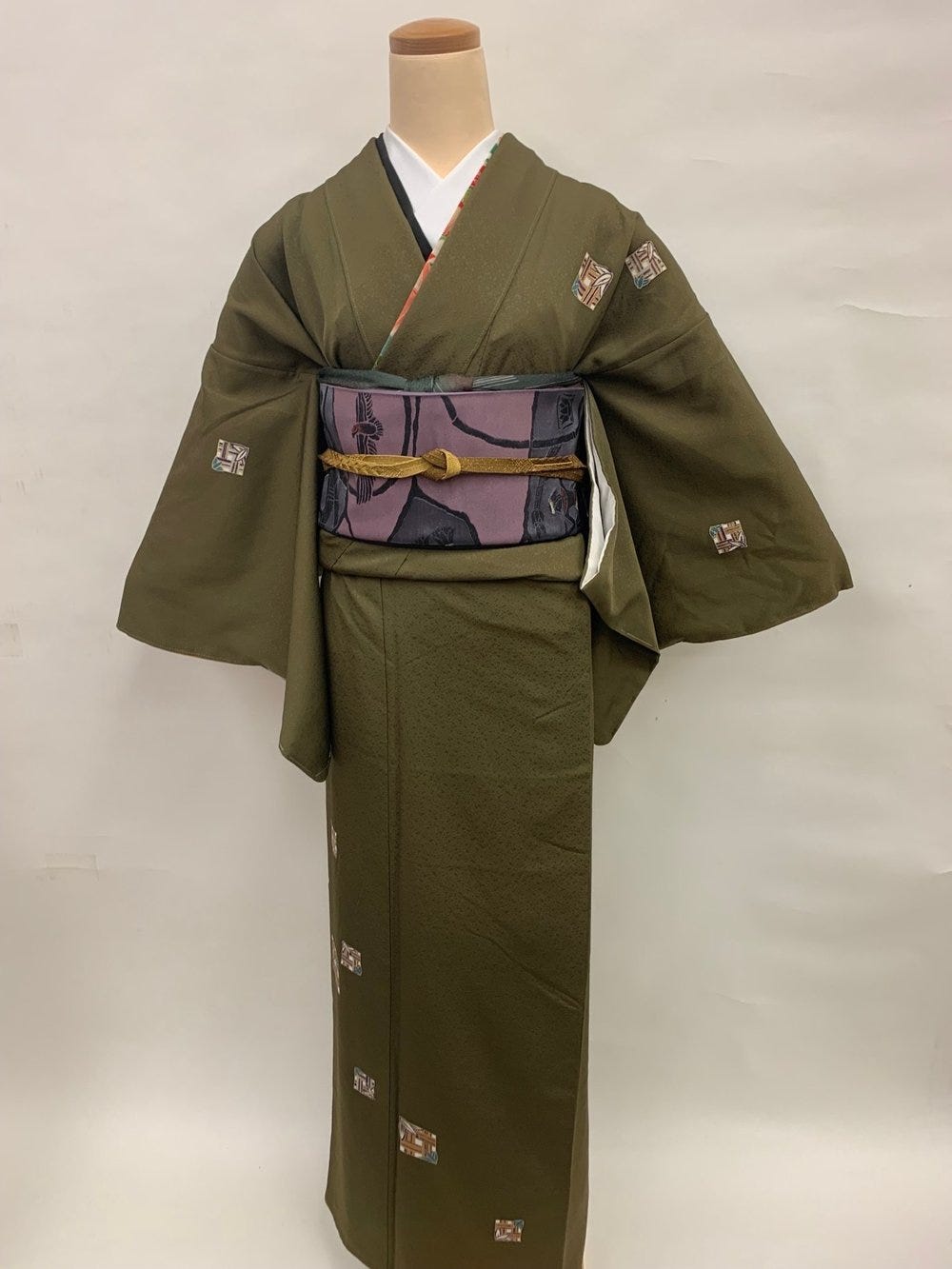
Kimono from different time periods can be purchased today, but they tend to be expensive because of their age and the very involved process of sewing a kimono. This kimono can be purchased from an online Japanese antique shop and is sold for a grand total of $1,600.
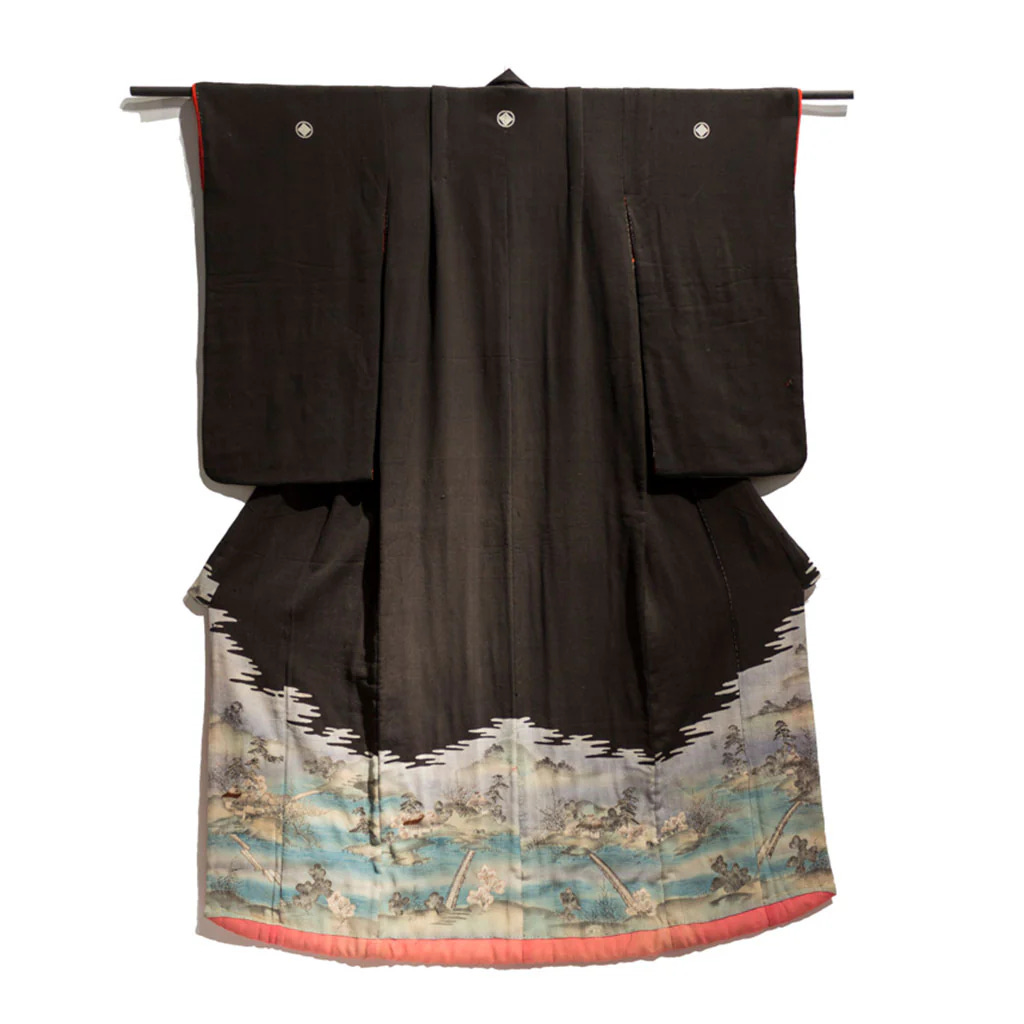
This kimono style is called a tomesode and is worn to formal events by married women. Many tomesode have very minimal patterns and will usually have a pattern at the bottom hem of the garment with botanicals of momiji (maple leaves) or flowers in a variety, such as tsubaki (camellia) or sakura (cherry blossoms).
Something you may not know is that men wear kimono as well! The print of these kimono tends to be more subdued patterns, usually with stripes, but sometimes with traditional patterns, like the tortoiseshell pattern that can be found on another vintage kimono from this shop.
Men’s kimono tended to have various levels of formality, like the women’s kimono. The most informal is called the nagagi, which is just the kimono and does not include the hakama trousers. One could make the outfit more formal if he wore a haori with it. This haori is like a jacket of sorts, with the long sleeves of the kimono. The haori could be longer or shorter depending on the occasion.1
The next level of formality included a hakama, as mentioned before. Think of wide trousers that are tied at the waist. The hakama and haori can be made of two different types of fabric and are usually all in one color.
The most formal kind of men’s kimono is the kuromontsuki haori hakama. As you can see from the name, haori and hakama are worn and are made with very fine materials. This style is usually worn at funerals or by the groom at weddings, to name a few. Here is an example of a kuromontsuki haori hakama!
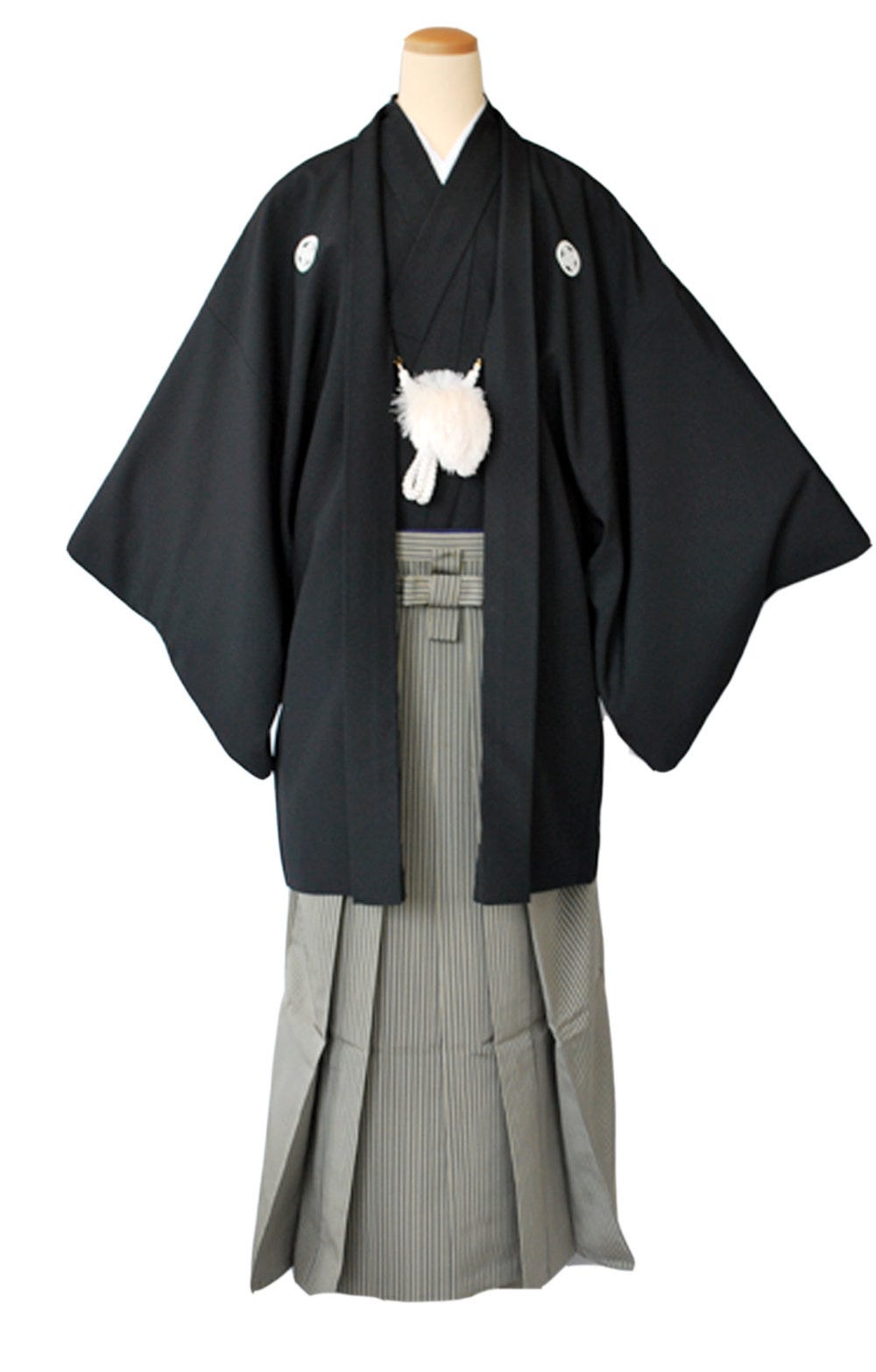
Now that you understand the basics of Japanese dress let’s see how things changed during the Taisho era.
Taisho-era Clothing
Many art styles were prevalent in the Taisho era, one of them being Art Deco. This style greatly impacted the kimono, resulting in bright pops of all sorts of colors and patterns. Here are two that I was able to find!
As I mentioned previously, haori also grew in popularity. While this haori I own is from the late Showa era (1945-1989), it shows what the garments look like. Here is a picture of a Taisho-era haori as well!2
A Blend of Western and Traditional
Thanks to these bright pops of color and pattern and other influences, clothing started to take a turn for those living in the Taisho era. The Meiji period brought much Westernization to the country, and with it came many clothing styles from Great Britain and America.
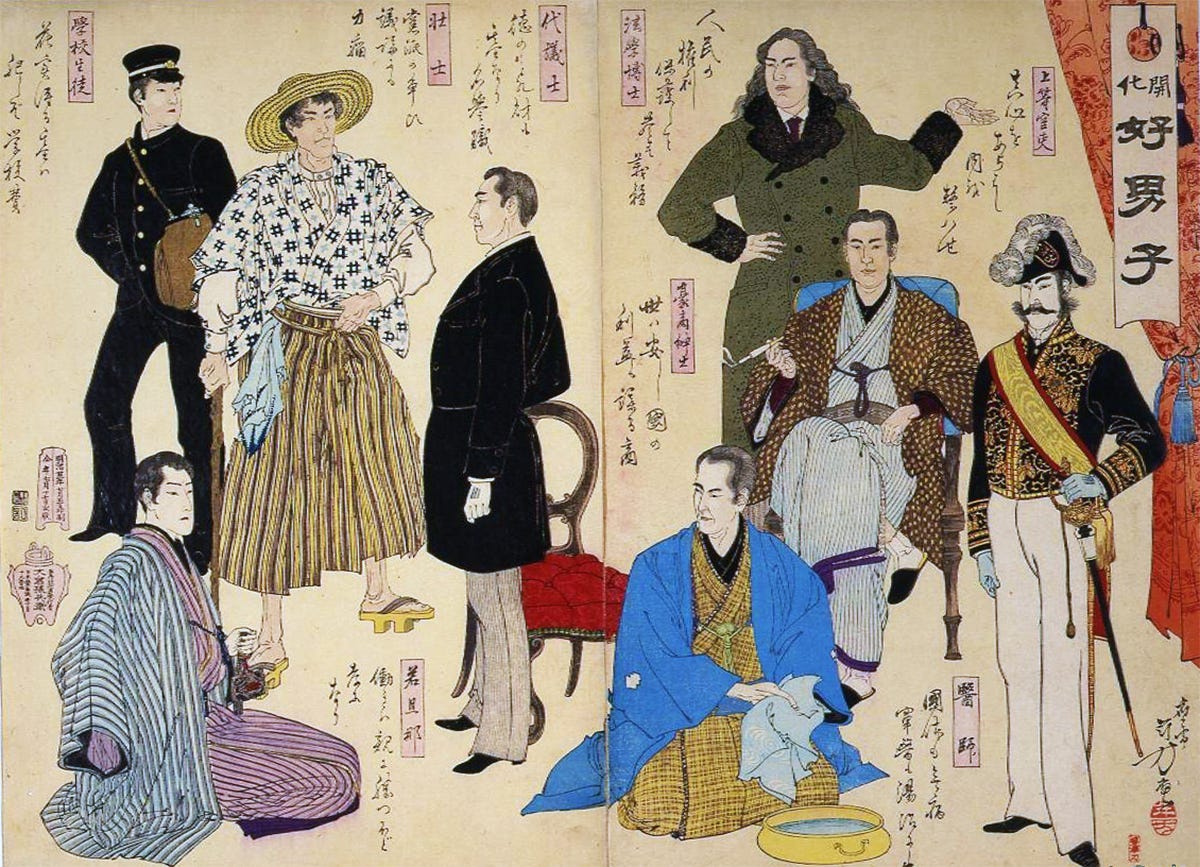
Some people would blend the two styles of clothing, such as ladies wearing boots or heels instead of the traditional geta or wearing double-breasted coats. The boys would wear caps with their school uniform, which consisted of kimono and hakama.
A trend grew in intensity during this time, inspired by American fashions and makeup. The famous skincare brand Shiseido grew in popularity at this time, as it started to sell cosmetics in 1916.3 Colored face powder was introduced to the cosmetic market and exploded in popularity.
Young girls, who would call themselves “Modern girls” or “moga,” would cut their hair into the modern bob and adopt Western clothing as they paraded across the piers.4 Only a small percentage of women at the time wore Western clothing, but these Moga made sure that they stood out amidst the rest. This trend would grow during the following period.
While traditional Japanese clothing is not as prominent now, the traditions have not faded away. Many kimono stylists are still found in the country and other countries, giving tips and tricks and sharing history with whoever wants to learn about it. Tourists can travel to Kyoto and wear the traditional kimono, experiencing what used to be a daily practice for the Japanese people.
If you want to learn more about the specific details of traditional Japanese dress, here’s a video that I’ve found very informative! I hope you enjoy them like I did!
Thank you all for taking the time to read this week’s post! Did you find something interesting? Let me know!
🍵 If you’d like to make a one-time small donation, feel free to buy me a tea! All of this is optional, but anything is appreciated!
“Guide to Different Types of Men’s Kimonos in Japan: Live Japan Travel Guide.” LIVE JAPAN, 10 Nov. 2020, livejapan.com/en/article-a0004703/.
“History of Kimono - Meiji and Taisho Period.” Kimonoya Japan, www.kimonoya-japan.net/page/34. Accessed 11 Nov. 2024.
“The History of Shiseido.” Escentual, escentual.com/blogs/editorial/what-is-shiseido-known-for. Accessed 11 Nov. 2024.
The Japanese Modern Girl: Beyond Gender - Owlcation, owlcation.com/humanities/The-Japanese-Modern-Girl-Beyond-Gender. Accessed 12 Nov. 2024.


